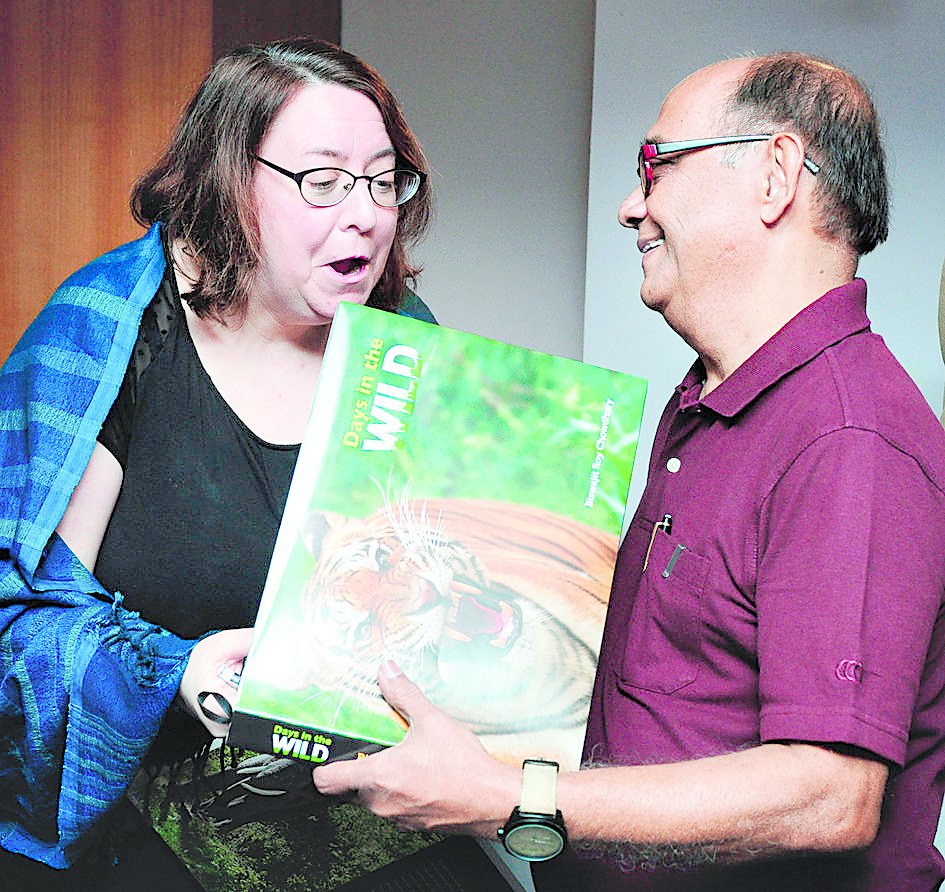Kolkata :
She is Appaji to even those in this music loving city who don’t know how she got the name. To Ravi Shankar, she was a little sister, “chhoto bon”. Kishori Amonkor calls her Didi but thinks of her “like mother”. Kabir Chowk at Banaras adorned her with the sobriquet of thumri samragyi while the government showered on her the Padma Bhushan. To the world at large, she’s Dr Girija Devi.
However, more important than the many epithets is the fact that ‘Girija — a Lifetime in Music’ — distills her as both, a vocalist and a guru. For, it’s a tribute by her disciples Debapriya, Samanwaya and Sankalp to the Purab Ang maestro as she turns 86. The film, produced by daughter Sudha Datta and Madhuchandra, was launched at ICCR on Saturday in the presence of Governor KN Tripathi, Pt Vijay Kichlu, Krishna Neotia and Sanjay Budhia while H P Budhia presented her a purse of Rs 1 lakh.
To give one example: Girija Devi asks a disciple to stretch out her arm in the drizzle. “This is rim-jhim puhar, a few notes on your skin. If you sing two-three taans, it will become a shower or downpour. The words of the bandish don’t warrant that,” she imprints the experience on her student’s mind. On another occasion, she sings of a separated lover. “She’s like fish out of water, tarap tarap ke jee rahi. You must imagine the fish gasping for her life breath. Only when you see, feel, experience can you express emotions through your notes.” Clearly the memories of catching fish on the sandy banks of the now polluted Ganga inspires her to date.
Girija Devi, born to a Bhumihar Zamindar in Banaras of 1929, claims kinship with the traditions of Siddheswari Devi, Bismillah Khan, Ravi Shankar, Birju Maharaj, Rajan Saajan Mishra. Making her public debut at AIR Allahabad in 1949, she is an agraj (elder) showing the way to flautist Hari Prasad Chaurasia. As an upper class woman who promised her mother and grandmother she’d never perform mujra (private concerts), she became a faculty member of ITC Sangeet Research Academy – and made Kolkata her second home. Music, as Girija Devi has taught Anjana Nath, Manasi Majumdar, Sunanda Sharma, Malini Awasthi, Dalia Rahut — among so many others — “is more than a weaving together of notes. It is breathing lived life into the words.” Sometimes she does this with sparkling taans, unique embellishments, exquisite artistry.
Sometimes she displays her grasp of tappa and dadra, at other times bhajan and khayal gayaki. But, and always, people flock to listen to her thumri. If Omkarnath Thakur was synonymous with bhajan, Siddheswari was the empress of thumri, she believes. But not once will she disappoint even those who’re alien to the regional characteristics of Kajri, Chaiti, Hori…
Once they sit through her recital, they go home with a profound sense of happiness. As they do after watching Girija – despite its 140-minute duration. Isn’t that ‘ananda’ – aesthetic as much as spiritual – the lakshya of every high art?
source: http://www.timesofindia.indiatimes.com / The Times of India / Home> City> Kolkata / by Ratnottama Sengupta, TNN / December 21st, 2014








